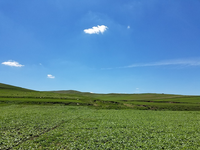Difference between revisions of "Smell"
(→Key Stage 4) |
|||
| Line 40: | Line 40: | ||
[[Smell]] is one of the 5 main [[human]] [[sense]]s. | [[Smell]] is one of the 5 main [[human]] [[sense]]s. | ||
| − | ===About | + | ===About Smell=== |
: [[Smell]] allows [[animal]]s to detect certain [[chemical]]s in the [[air]]. | : [[Smell]] allows [[animal]]s to detect certain [[chemical]]s in the [[air]]. | ||
: When an [[animal]] detects a [[chemical]] in the [[air]] [[Receptor Cell|receptor cells]] in the [[nose]] create an [[Action Potential|action potential]] which sends an [[Impulse (Biology)|impulse]] to the [[Central Nervous System|central nervous system (CNS)]]. | : When an [[animal]] detects a [[chemical]] in the [[air]] [[Receptor Cell|receptor cells]] in the [[nose]] create an [[Action Potential|action potential]] which sends an [[Impulse (Biology)|impulse]] to the [[Central Nervous System|central nervous system (CNS)]]. | ||
Revision as of 13:29, 6 April 2019
Contents
Key Stage 1
Meaning
Smell is a sense we get from our nose.
About Smell
Smell can be sweet or stinky, fresh or musty. There are many different smells but not many words to describe smell. Usually we say something smells like something else.
Examples
| A rose has a sweet smell. | The smell of an old book is musty. | I can smell the fresh air outside. |
Key Stage 2
Meaning
Smell is one of the 5 main human senses.
About Smell
Key Stage 3
Meaning
Smell is one of the 5 main human senses.
About Smell
Key Stage 4
Meaning
Smell is one of the 5 main human senses.
About Smell
- Smell allows animals to detect certain chemicals in the air.
- When an animal detects a chemical in the air receptor cells in the nose create an action potential which sends an impulse to the central nervous system (CNS).


